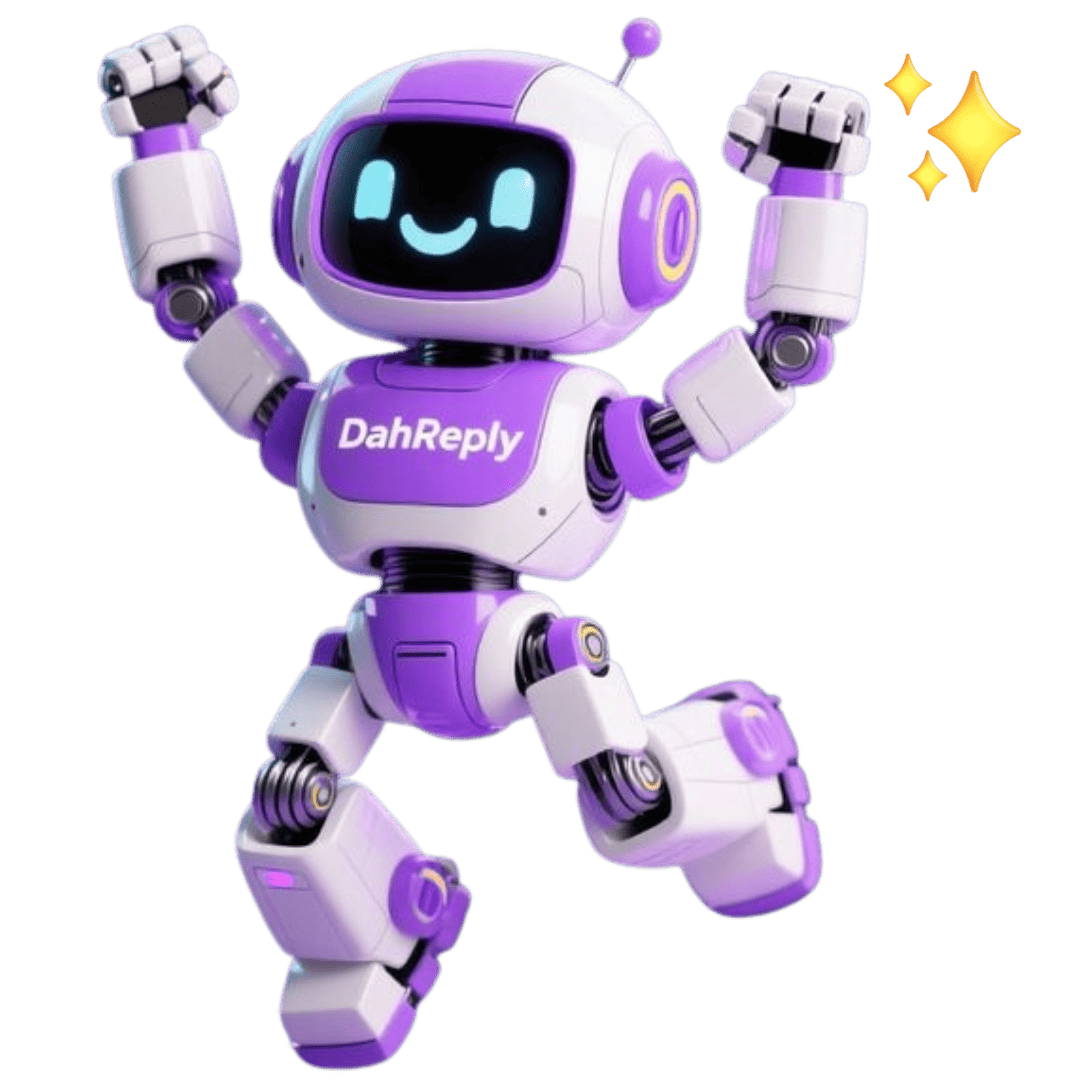TABLE OF CONTENTS
26 February 2025
Have you ever asked a chatbot a question and received a response so quickly and precisely that it felt like you’re chatting with a human?
Has that ever made you wonder how chatbot AI works?
Behind the scenes, an AI chatbot isn’t guessing—it’s using powerful technology to understand you, learn from interactions, and generate responses that improve over time.
The question is this: how does chatbot AI work so seamlessly to interpret your query, analyse intent, and generate an appropriate response?
In this article, we will break down what is chatbot and how it works, and the step-by-step process they follow to deliver responses in milliseconds. We will also explore the benefits of chatbots and why they are transforming business communication across industries.
Chatbot 101: What Is Chatbot and How It Works?
A chatbot is an AI-powered software application designed to simulate human conversation. It interacts with users through text or voice-based interfaces to provide assistance, answer questions, and perform various tasks.
From customer service chatbots handling inquiries to AI-powered virtual assistants streamlining workflows, chatbots are being used across multiple sectors to enhance efficiency and engagement.
There are two main types of chatbots:
- Rule-Based Chatbots – These operate on predefined scripts and respond based on set keywords or patterns. While effective for simple interactions, they lack adaptability and learning capability.
- AI-Powered Chatbots – These leverage artificial intelligence, natural language processing, and machine learning to understand context, learn from interactions, and improve responses over time. The smarter the chatbot, the more accurately it can interpret queries and generate meaningful replies.
The core of chatbot AI learning lies in its ability to process language, interpret meaning, and generate responses based on training data.
💡 Fun Fact! The first chatbot, ELIZA, was created in 1966! It was a simple program that mimicked human conversation—but compared to today’s AI chatbots, it was like talking to a parrot!
So, how does a modern chatbot learn to do all this? Let's break it down.
How Does Chatbot Learn?
Chatbots, like humans, progress through different stages of learning before they become highly efficient in understanding and responding to queries. This process can be broken down into three main phases:
Phase 1: Foundation Learning
Every AI chatbot begins with basic learning, much like how a person learns a new language. At this stage, chatbots are trained on:
- Language patterns and sentence structures
- Common question-answer pairs
- Fundamental conversation flows and interactions
Phase 2: Specialised Training
Once a chatbot grasps the basics, it moves on to more advanced, domain-specific learning. At this stage, the chatbot is trained on:
- Industry Knowledge: It learns technical terms, product details, and company-specific policies.
- Brand Communication Style: It adapts to the company’s tone, preferred phrasing, and set protocols.
- User Intent Recognition: It develops a deeper understanding of user queries, enabling it to provide more contextually relevant responses.
Phase 3: Real-World Experience
After foundational and specialised training, chatbots continue to evolve through real-world interactions.
Every user conversation contributes to their learning, improving accuracy and adaptability. At this stage, chatbots refine their abilities through:
- Pattern Recognition: Identifying recurring user’s queries and improving response accuracy.
- Feedback Analysis: Learning from user’s reactions, response effectiveness, and sentiment analysis.
- Continuous Updates: Integrating new data to stay relevant, correct mistakes, and refine responses.
Now that we understand how does chatbot learn, let’s examine what happens behind the scenes when a user sends a query.
The Step-by-Step Journey of an AI Chatbot’s Reply
From the moment a user types a message to the chatbot’s response appearing on screen, a complex multi-step process occurs in a fraction of a second. Here’s a breakdown of how chatbot AI works in real-time:
First Contact
When a message is received, the AI does more than simply read it.
It instantly breaks it down into meaningful components, analysing sentence structure, keywords, and context.
Unlike traditional keyword-based systems, AI chatbots go beyond surface-level text matching to grasp the intent behind the user’s message.
Context Retrieval
To ensure the conversation remains coherent, the AI retrieves relevant chat history, user data, and knowledge base information.
This allows it to maintain continuity and provide accurate responses without requiring the user to repeat information.
Understanding & Processing
At this stage, the chatbot constructs a semantic understanding of the message using:
- Attention mechanisms to determine which words in the query carry the most weight.
- Context embedding to place the message within the broader conversation history.
- Intent detection to establish the purpose behind the user’s request.
Response Generation
The AI generates multiple possible responses and ranks them based on relevance, accuracy, and conversational appropriateness.
The selected response is then adjusted to match the brand’s tone of voice.
Final Review & Quality Check
Before sending the message, the AI runs a final check to ensure:
- Fact verification against the knowledge base.
- Grammar and clarity assessments to maintain readability.
- Safety and compliance filtering to prevent inappropriate or misleading responses.
With that, the chatbot delivers a polished and natural-sounding reply, ensuring a smooth user experience.
The Benefits of Chatbots
AI chatbots are not just technological novelties; they provide substantial business advantages by enhancing customer interactions and optimising processes.
By leveraging artificial intelligence (AI), businesses can create seamless, efficient, and highly personalised experiences that improve both customer satisfaction and operational efficiency.
Here are some of the key benefits of chatbots:
- 24/7 Availability – Unlike human agents who work in shifts, chatbots provide instant support anytime, eliminating long wait times and ensuring users receive assistance whenever they need it.
- Scalability – AI-powered chatbots handle thousands of interactions simultaneously, ensuring efficiency even during peak hours and scaling effortlessly as business demands grow.
- Cost Savings – Automating repetitive inquiries reduces the need for large customer service teams, cutting operational costs while improving response quality and consistency.
- Personalisation – Chatbots learn from previous interactions, adapting responses to individual users, remembering preferences, and offering tailored recommendations that enhance customer engagement.
- Data Insights – By analysing customer behaviour and frequently asked questions, chatbots provide valuable insights that help businesses refine their services, identify trends, and enhance overall customer experience.
- Multilingual Support – AI-powered chatbots can communicate in multiple languages, breaking down language barriers and providing seamless global support without the need for dedicated multilingual agents.
- Seamless Integration – Modern chatbots integrate with social media, communication platforms, CRM systems, e-commerce platforms, and helpdesk software, ensuring that customer interactions remain consistent across different channels.
- Improved Lead Generation – Chatbots can engage with potential customers, qualify leads, and guide them through the sales funnel by providing relevant information and capturing key details.
- Reduced Human Workload – By handling routine queries, chatbots free up human agents to focus on complex, high-value interactions that require empathy and critical thinking.
- Enhanced Customer Satisfaction – With faster response times, accurate information, and personalised interactions, chatbots improve the overall customer experience, leading to higher satisfaction and loyalty.
AI chatbots are more than just tools; they are powerful business assets that drive efficiency, improve engagement, and contribute to long-term growth.
Investing in a well-designed chatbot solution such as Dah Reply’s AI Chatbot can transform customer experience, enhance productivity, and unlock new opportunities for businesses of all sizes.
Chatbot Best Practices
Now that you understand how chatbot AI works, and its benefits, it’s also important to learn how to make the most of AI chatbots.
A well-trained chatbot is not just about answering questions—it’s about creating meaningful interactions, improving efficiency, and continuously evolving to meet customer needs.
Here’s how you can ensure your chatbot delivers maximum value:
Start with Clear Goals
Before deploying a chatbot, it’s essential to define its purpose. Ask yourself: What do you want your chatbot to achieve?
- Define Specific Use Cases – Identify the key areas where the chatbot will add the most value. Will it handle customer support, process orders, qualify leads, or assist with onboarding?
- Set Measurable Objectives – Establish KPIs such as response time, resolution rate, customer satisfaction, or lead conversion to track success.
- Plan Learning Pathways – Think about how the chatbot will improve over time. Will it be retrained regularly? Will it integrate with customer feedback?
Monitor and Adjust
A chatbot is never a one-and-done solution—it requires ongoing monitoring and fine-tuning to stay effective.
- Track Performance Metrics – Regularly analyse chatbot interactions, identifying areas where it excels and where improvements are needed.
- Gather User Feedback – Encourage users to rate chatbot responses or provide feedback, helping refine the experience.
- Make Regular Improvements – Based on data insights and user input, refine scripts, expand knowledge bases, and adjust response strategies to enhance interactions.
Support Growth
As your business evolves, so should your chatbot. Keeping it up to date ensures it continues to provide relevant and helpful responses.
- Add New Information Regularly – Keep the chatbot updated with the latest company policies, product details, and industry trends.
- Update Training Data – Use real-world conversations to enhance chatbot learning, improving its ability to understand and respond accurately.
- Refine Responses – Ensure the chatbot aligns with your brand voice and refines its responses for clarity, empathy, and effectiveness.
By taking a proactive approach to chatbot management, businesses can ensure their AI assistants remain valuable assets that grow smarter and more intuitive over time.
A well-optimised chatbot isn’t just a tool—it’s a dynamic extension of your brand, enhancing customer engagement and streamlining operations seamlessly.
Ready to Transform Your Business?
Understanding how chatbot AI works is just the beginning. The real value comes from implementing this technology effectively in your business.
Want to see how a learning AI chatbot can transform your customer experience? Book a FREE demo to discover how Dah Reply’s AI chatbots can help your business thrive.


